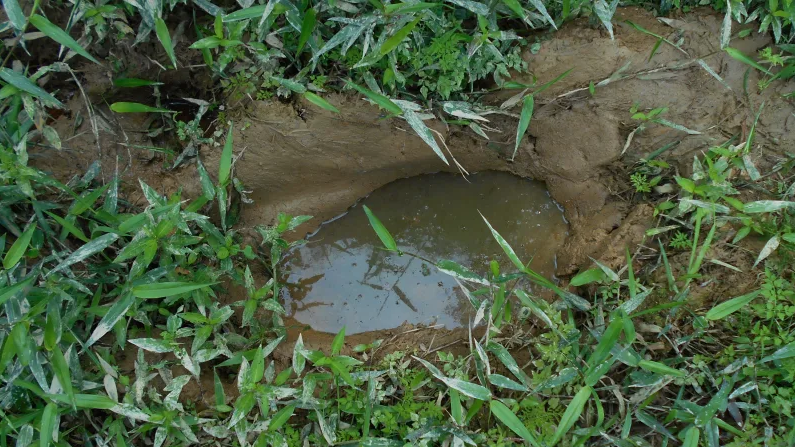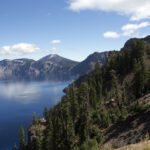
Why Frogs Love to Lay Their Eggs in Elephant Footprints

Frogs in Myanmar are surprisingly dependent upon elephants, or rather, the tracks they leave behind. New research shows that water-filled elephant footprints provide an under-appreciated sanctuary for frogs to lay their eggs.
During the dry season in the southeast Asian nation of Myanmar (formerly Burma), some elephant tracks fill up with water, creating a wet place for frogs to lay their eggs and for tadpoles to grow to maturity. The water-filled elephant tracks, in addition to providing refuge, may also function as “stepping stones” that connect various frog populations.
The herpetologists who made this charming discovery, a team led by the Myanmar branch of the Wildlife Conservation Society, say their finding highlights the importance of preserving dynamic ecosystems.
“Elephant tracks are virtual condominiums for frogs,” study co-author Steven Platt said in a Wildlife Conservation Society release. “This study underscores the critical role wildlife play in ecosystems in sometimes unexpected ways.”
Elephants, through their trampling, foraging, and pooping, exert a large environmental footprint—both literally and figuratively—on the landscape. These elephantine effects aren’t subtle, leading to the term “ecosystem engineering” to describe their influence on the environment.
The dietary habits of elephants, for example, transform swaths of plant-life into dung. This enriches the forest floor, providing nutrients for both land- and water-based creatures. When elephants knock down branches and trees, it creates a natural shelter for other wildlife, like small lizards and mammals.
To learn more, a WCS-Myanmar team led by Steven Platt visited the Htamanthi Wildlife Sanctuary in March 2016 and again in March 2017—months that coincided with Myanmar’s dry season. This sanctuary features a seasonally flooded wetland surrounded by an evergreen forest; this place gets really wet during the rainy season from June to September (great for frogs), but it’s dry from March to June (not so great for frogs).
The researchers documented hundreds of elephant tracks during their two visits, many of which appeared to be older than 60 days. As it was dry season, most tracks had no water, but some did—the result of groundwater seepage. Of the tracks filled with water, 20 were found to contain batches of frog eggs or tadpoles (no adult frogs were found in any of the footprints). In one case, a single trackway contained seven water-filled prints, pointing to the important contribution of a single elephant.
“To the best of our knowledge, this is the first report of water-filled elephant tracks being used by [frogs] as [egg-laying] sites and nursery habitat for tadpoles,” the researchers wrote in the study.
The tracks, which last nearly a year, provide a valuable service for the frogs. The water-filled tracks offer “temporary, predator-free breeding habitat for [frogs] during the dry season when alternate sites are unavailable,” according to the study. Importantly, the tracks aren’t big enough to host fish, which prey on frog eggs and tadpoles.
Sadly, the IUCN lists Elephas maximus as an endangered species.








